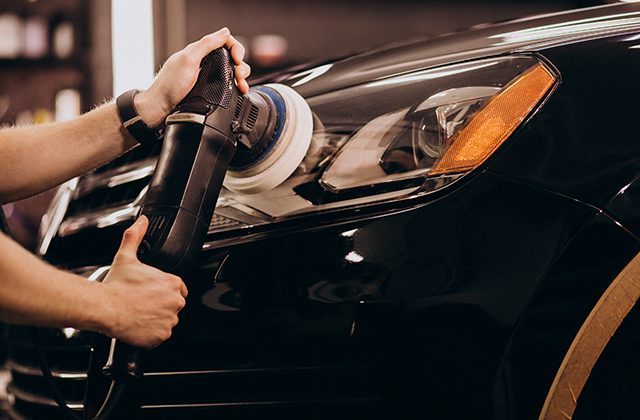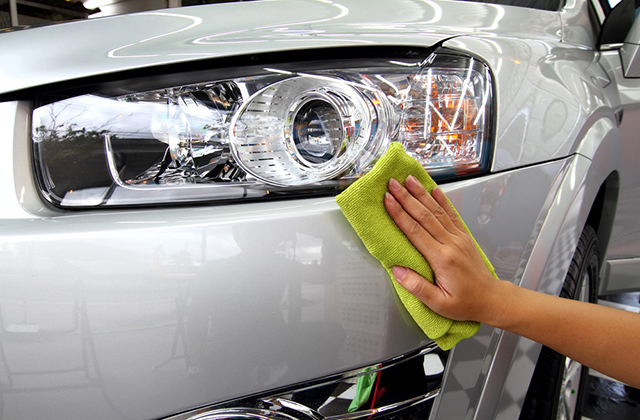Bluetooth in Cars:
Ceramic coating Canberra range of coatings and paint protection products are built to withstand the harshest chemicals and environments, meaning you won’t have to reapply again! The new generations of cars will have an increasing number of micro controllers connected via two or more networks. An advantage of this is that the car can be individually customized by software, another that the car to great extent can have self diagnostic functions. To fully use such features, it is necessary to have a bidirectional communication between the car system and production tools as well as service tools for down loading new software and parameters and uploading of status and diagnostic messages. These production and service tool will, to a great extent be based on pc technology. The connection between car system and the tool is made via a cable, either directly to the CAN(Controller Area Network) bus via a gateway. The cheapest way is to connect the pc directly to the CAN bus by drip line but this has to be short. According to the CAN standard it should be less than 39 cm at 1 Mbit/s bitrate. Compare with USB and Bluetooth, the mobility and versatility has highly performed Bluetooth.
Bluetooth in car production:
In the car production a lot of software is downloaded as final step in the production line. This is an application where Bluetooth would be ideally suited. Bluetooth base station is connected to the production field bus. When the car on line gets connected to the Bluetooth base station, it uploads it serial number. The production computer then downloads the software for this very car via the field bus to the base station, which in turn transmit it to the car. However, this is a dedicated use and no other Bluetooth units than those installed in the cars should get connected to the cell.
Bluetooth for car service:
A scenario for using Bluetooth could be:
1) When the car enters the service station, its Bluetooth station gets contact with the service stations main computer. This has previously exchanged information with the car computer via the cell phone system.
2) The service station main computer alerts the service man allotted the task and his PC establishes contact with the car and downloads any information needed.
3) The serviceman gets any work instructions needed on his PC. When servicing the car, he can control and adjust several functions via the PC, e.g., any lights, windows, climate control, engine parameters, etc. He can also download the latest software versions to any Electronic Control Unit (ECU)
CAN/Bluetooth basics:
CAN was developed to be a base for a highly reliable communication via a twisted pair of wires that could be applied from very simple tasks to advanced real time control. To achieve this goal, it is based on the principle that every node in a system simultaneously checks each bit transmitted on the bus. By this principle a row of problems like buss access, collision detection, data consistency, etc. are solved in an elegant way. However, the condition that every node should see the same bit at the same time requires a controlled wave propagation time. This is easily achieved in a wired system but hard to achieve in a wireless system. Therefore, any wireless transmissions in CAN systems have to be made via gateways and Bluetooth offers the best possibilities for this task among the available radio standards.
The ideal Bluetooth concept for diagnostics:
The ideal Bluetooth concept for diagnostics should show the following qualities:
1 Low cost
2 Performance as needed
3 Standards as needed
To reach these goals we must have a low cost, high performance Bluetooth unit that can be used for any application. Then it has to be stripped from everything not needed by everyone, i.e., a concept like CAN. CAN provide the basic features needed by any controller network, but remaining features required have to be provided by an additional higher layer protocol. The basic Bluetooth block should take care of the RF part and the essential part of the baseband protocol that is of no or minor interest for any application but essential for the Bluetooth functionality.
Communication during production:
Using wireless communication between the vehicle and the automation system of the production line could open a way to completely new functions in the production process. Depending on the step in the process, for example during final assembly, the vehicle controller and controllers of the production line are able to exchange status information both about the product and the process.
Communication during service:
Potential applications during service can easily be derived from the scenario for the production process described above. Wireless communication between the vehicle and a computer of the service station can be used to exchange status information and service specific information. This step may be supported by a preceding data exchange using telecommunication. Wireless communication in combination with a mobile service computer offers optimum flexibility to the service personnel.
Advantages and Benefit:
The most important advantages of wireless technologies for technical tasks are more or less hidden to the vehicle customer. The benefit of such a solution is the increase in flexibility, modularity and reliability. Although the benefit cannot be experienced directly by customers it is nonetheless important for automotive industry. Additionally the potential of wireless communication on the level of technical tasks between intelligent devices and control units inside the vehicle as well as control units and man machine interfaces in the surrounding area of the car may lead to new functionalities and an increase in flexibility during production and service. The benefit for the customer is an increase in reliability. For the phases of product development the increase in flexibility is a great benefit. A simplified cable harness and wireless interfaces are advantages for manufacturing. For service, maintenance, and repair wireless interfaces are advantageous with respect to disassembly and assembly of parts. Additionally wireless communication opens possibilities for flexible connections to man machine interfaces and diagnostic systems. Although in general an electronic component for a wireless transmission unit is more expensive than a cable, there are several possibilities to reduce product cost, for example by standardization and by reduction of assembly efforts.
Conclusion:
There is a potential of up to hundreds of million per year Bluetooth nodes within the vehicle manufacturer market if Bluetooth can be used for real time control and other technical tasks. For several years a major trend in vehicle development has been the increasing number of electrical and electronic systems. Many of these systems have been introduced to offer innovations to the customer by an increase in functionality, comfort, and safety. Another reason is the partial replacement of mechanical components by electrical components or their integration into mechatronic systems.
Article Source: http://EzineArticles.com/2353905


